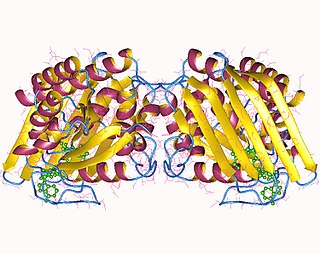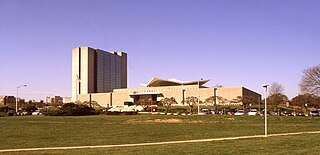
Epigen also known as epithelial mitogen is a protein that in humans is encoded by the EPGN gene.

Probable G-protein coupled receptor 158 is a protein that in humans is encoded by the GPR158 gene.

Trace amine-associated receptor 9 is a protein that in humans is encoded by the TAAR9 gene.

Beta-microseminoprotein is a protein that in humans is encoded by the MSMB gene. For historical reasons, the scientific literature may also refer to this protein as Prostate secretory protein 94 (PSP94), microseminoprotein (MSP), microseminoprotein-beta (MSMB), beta-inhibitin, prostatic inhibin peptide (PIP), and inhibitin like material (ILM).

Olfactory receptor 51E1 is a protein that in humans is encoded by the OR51E1 gene.

Olfactory receptor 2L13 is a protein that in humans is encoded by the OR2L13 gene.

Metalloreductase STEAP2 is an enzyme that in humans is encoded by the STEAP2 gene.

Zinc transporter ZIP10, also known as solute carrier family 39 member 10, is a protein that in humans is encoded by the SLC39A10 gene. ZIP10 belongs to a subfamily of proteins that show structural characteristics of zinc transporters, and have 14 members in the human genome: ZIP1, ZIP2, ZIP3, ZIP4, ZIP5, ZIP6, ZIP7, ZIP8, ZIP9, ZIP10, ZIP11, ZIP12, ZIP13 and ZIP14.

Solute carrier family 25, member 16 is a protein in humans that is encoded by the SLC25A16 gene.

Inositol monophosphatase 3 also known as inositol monophosphatase domain-containing protein 1 (IMPAD1) is an enzyme that in humans is encoded by the IMPAD1 gene.

Protein SOGA3 also known as suppressor of glucose, autophagy associated 3 (SOGA3) is a protein in humans that is encoded by the SOGA3 gene.

Calcium/calmodulin-dependent protein kinase ID is a protein in humans that is encoded by the CAMK1D gene on chromosome 10.

Monocarboxylate transporter 6 (MCT6) is a protein in humans that is encoded by the SLC16A5 gene.

Solute carrier family 15, member 4 is a protein in humans that is encoded by the SLC15A4 gene.

Biliverdin reductase A is a protein that in humans is encoded by the BLVRA gene.

Zinc finger protein 280B is a protein that in humans is encoded by the ZNF280B gene.

DnaJ heat shock protein family (Hsp40) member C12 is a protein that in humans is encoded by the DNAJC12 gene.

Solute carrier family 39 member 12 is a protein that in humans is encoded by the SLC39A12 gene.

HEPACAM family member 2 is a protein that in humans is encoded by the HEPACAM2 gene.

SHC binding and spindle associated 1 like is a protein that in humans is encoded by the SHCBP1L gene.



















